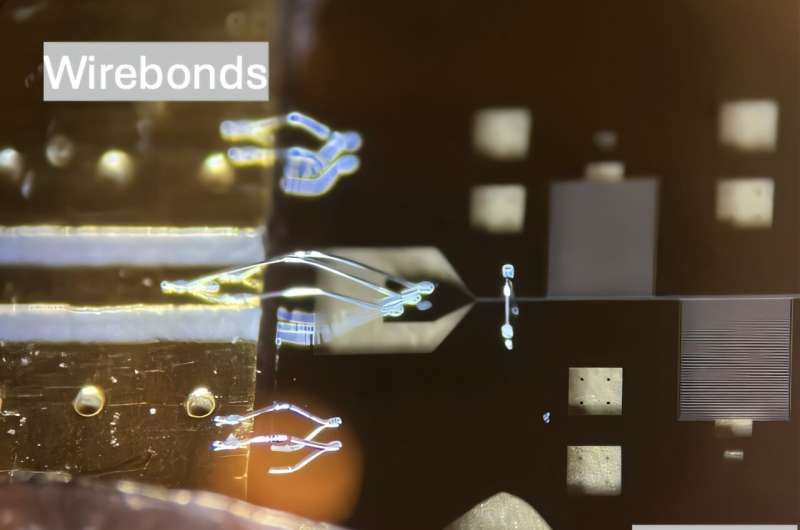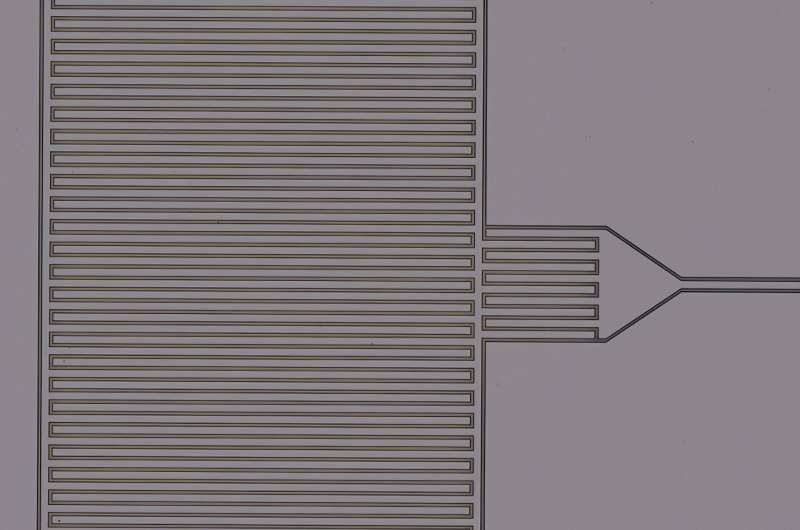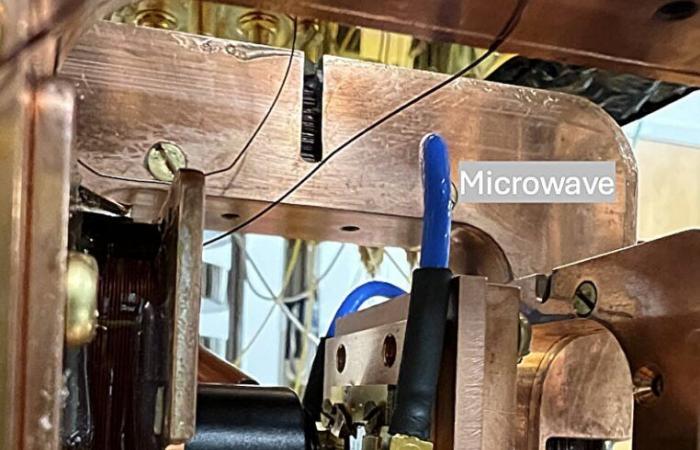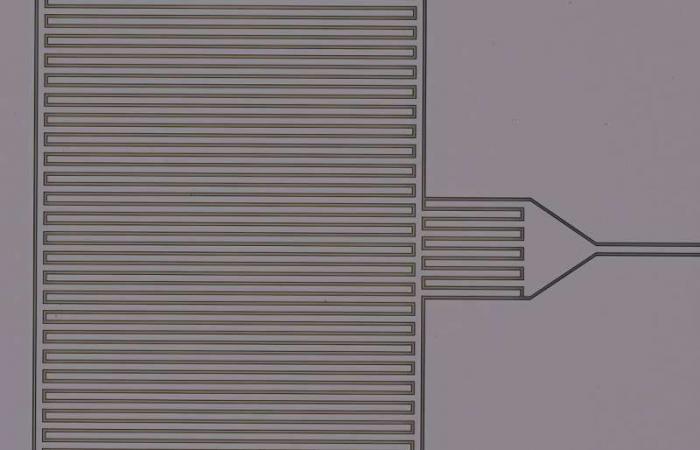Quantum technologies, which exploit the quantum mechanical effects to process information, could surpass their conventional counterparts in certain complex and advanced tasks. The development and deployment of the real world of these technologies is partly based on the ability to effectively transfer information between different types of quantum systems.
A long-standing challenge in the field of quantum technology is to convert the quantum signals carried by microwave photons (i.e., electromagnetic radiation particles in the microwave frequency range) into optical photons (that is, visible or almost visible light particles). The devices designed to make this conversion are called optical microwave transducers.
Researchers from California Institute of Technology have recently developed a new optical microwave transducer based on rare ion crystals. Their transducer on chip, described in an article published in Nature physicshas been implemented using yterbium-171 ions boosted in a yvo4 cristal.
“In the context of quantum technologies, the vision is that one day we will have quantum computers interconnected in a quantum internet, similar to the classic infrastructure and current communication,” said Andrei Faraon, the main author of the newspaper, to Issues.fr.
“One of the main quantum calculation technologies is based on superconductive qubits, so there are efforts to try to connect these computers via optical fibers that can transmit quantum information at room temperature and long distances. »»
The operation of superconductive qubits is supported by unique photons with frequencies of a few gigahertz. The design of transducers who can reliably convert these photons into optical photons, which move more easily in optical fibers, is a key challenge within quantum technology.

“Most technologies to achieve it are based on non-linear optical systems that are coupled with optical and microwave resonators,” said Faraon. “Some previous works have suggested that the doped crystals of atoms could serve as a non -linear system which performs this conversion, or transduction. Our laboratory had expertise in work with atoms (or ions) of the rare land doped in crystals, so we have decided to see if they can actually perform an effective transduction. »»
Faraon and his colleagues initially tried to develop optical microwave transducers using Erbium atoms, but the efficiency they obtained was low. The researchers therefore decided to switch to YTTTERBIUM 171 ions in YTTRIUM orthovanadate, which ended up being very effective in coupling microwave and optical photons, which gives higher efficiency. The coupling they observed was so good that they could achieve good efficiency even without the need for optical resonators engineering.
“We started with a crystal substrate, about half a thick-thickness, doped with rare-terrain ions,” said Tian Xie, co-prime author of the newspaper. “On its upper surface, we have shaped a superconductive microwave resonator that talks about billions of doping laps inside the crystal. The rear surface obtains a thin gold mirror to improve the collection of optical photons. »»
The main advantage of the transducer developed by Faraon, XIe and their colleagues is that his large underlying spin set forms an intrinsic ultra linearity, which is generally several orders of magnitude superior to those formed in other conventional materials. As this set is integrated into the material itself, the device remains simple, compact and easy to cool, which minimizes the noise added.
“Another characteristic is that the operating frequencies are defined by atomic energy levels, leading to optical and microwave frequencies automatically paired between devices,” said XIE. “This uniformity is crucial for future quantum networks, where indistinguishable photons are necessary to create a tangle between distant quantum nodes. »»

In initial experiments, the researchers were able to directly measure the noise in their atomic transducer in the solid state for the first time. In addition, they found that this noise was surprisingly low.
“The transducer adds only a single photon of noise, and we were able to retrace each contribution to its source,” said Rikuto Fukumori, co-prime author of the newspaper. “What is exciting is that there is room to push the noise lower, perhaps being in the quantum diet. Hitting this level would remove a key obstacle for evolving quantum processors and long -distance quantum networks. »»
The new transducer developed by Faraon, XIe, Fukumori and their colleagues could soon be improved more and could be used to reliably connect future quantum networks. As part of their next studies, researchers also want to connect a single source of photon microwave to their transducer, as this would allow them to demonstrate the transduction of unique photons.
“This source is made up of certain superconductive quantum bits and other superconductive devices,” added Faraon. “Another direction for future research will be to improve the efficiency of the device and reduce noise, which we do by studying new materials with a higher concentration of yterbium and improving the design.
“We hope that in a few years, we will show a remote tangle of superconductive qubits using this transduction technology, and we will interconnect future quantum computers. »»










